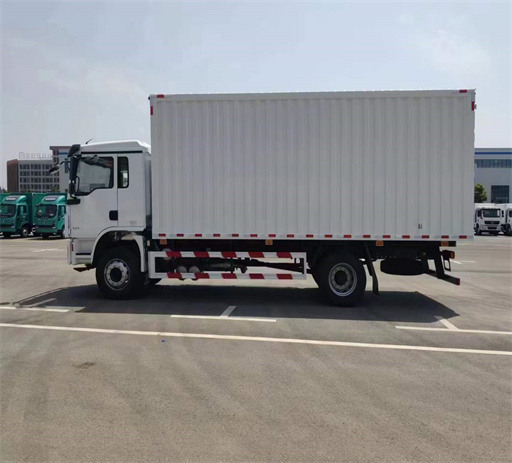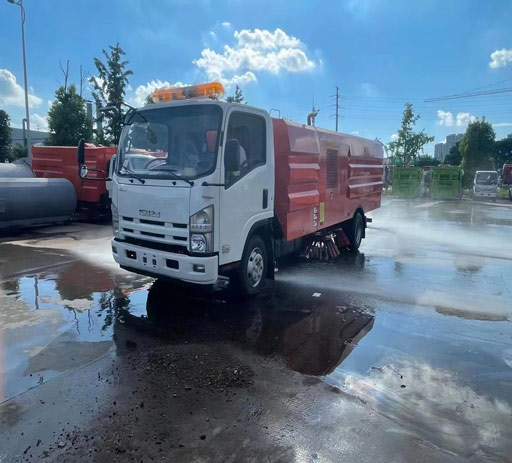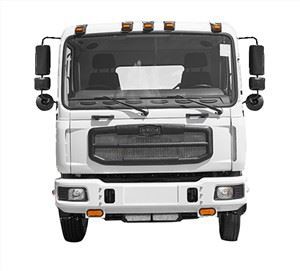Understanding Road Sweepers: The Ultimate Guide

Introduction to Road Sweepers
Road sweepers play a crucial role in maintaining the cleanliness and safety of our streets and public spaces. By removing debris, dirt, and litter from road surfaces, these machines ensure optimal driving conditions, enhance aesthetic appeal, and contribute to environmental sustainability. In this guide, we will delve deep into the world of road sweepers, exploring their types, functions, benefits, maintenance, and much more.
What is a Road Sweeper?
A road sweeper is a specialized vehicle designed to clean roadways and paved surfaces. These machines are equipped with various brushes and vacuum systems to collect dirt, leaves, grit, and other debris. Their primary purpose is to keep roads safe for vehicles and pedestrians, prevent pollution, and improve overall public hygiene.
How Do Road Sweepers Work?
Road sweepers utilize a combination of mechanical brushes and suction systems to effectively clean surfaces. The process generally involves:
- Brushing: Rotating brushes lift debris from the road surface.
- Suction: A powerful vacuum system collects the dislodged debris.
- Disposal: Collected debris is stored in a hopper for later disposal.
Types of Road Sweepers
There are several types of road sweepers, each tailored for specific cleaning requirements. The main categories include:
1. Mechanical Road Sweepers
Mechanical sweepers are ideal for routine street cleaning. They use rotating brushes to sweep debris into a collection chamber. These machines are efficient for picking up larger debris but may not be as effective for fine dust particles.
Example:
An example of a mechanical road sweeper is the Schmidt Sonic and the Elgin Pelican, which are commonly used in urban areas.
2. Vacuum Road Sweepers
Vacuum sweepers utilize a vacuum system to collect dirt and debris from the streets. They are effective for cleaning fine particles and provide a thorough clean.
Example:
The Bucher CityCat and the Nilfisk SW250H are popular models known for their excellent suction capabilities.
3. Combination Sweepers
Combination sweepers incorporate both mechanical and vacuum systems. They can handle a wide range of debris types, making them versatile for different cleaning scenarios.

Example:
Models such as the Tennant 7100 are considered combination sweepers offering great flexibility.
4. Ride-On Sweepers
Ride-on sweepers are built for larger areas and are designed for operator comfort. They allow the operator to sit and navigate while cleaning, making them suitable for large parking lots or stadiums.
Example:
The Tennant M30 is a well-known ride-on sweeper with advanced features for easy operation.
5. Truck-Mounted Sweepers
Designed for heavy-duty tasks, truck-mounted sweepers offer high capacity and are typically used in commercial cleaning operations. They can handle larger debris volumes and are often equipped with powerful engines.
Example:
The Schwarze A7000 is a prominent truck-mounted sweeper recognized for its robust performance.
Benefits of Using Road Sweepers
The use of road sweepers offers numerous benefits, including:
1. Improved Road Safety
Regular cleaning removes debris that could pose hazards to vehicles and pedestrians, reducing the risk of accidents.
2. Enhanced Aesthetics
Clean streets contribute to the visual appeal of a community, making it more attractive to residents and visitors alike.
3. Environmental Protection

By removing litter and pollutants, road sweepers help prevent harmful runoff into stormwater systems, protecting local ecosystems.
4. Cost Savings
Investing in road sweepers can reduce long-term maintenance costs by preventing wear on road surfaces and ensuring optimal conditions for public transport.
How to Choose the Right Road Sweeper
Selecting the appropriate road sweeper involves considering several factors, such as:
1. Cleaning Requirements
Identify the types of debris needing removal and choose a sweeper that can effectively handle those materials.
2. Area Size
For smaller areas, compact models may suffice, while larger operations may benefit from truck-mounted or ride-on sweepers.
3. Budget Constraints
Consider your budget for purchasing or leasing a road sweeper, along with potential maintenance costs.
4. Operator Comfort
Ensure that the model chosen provides ergonomic features for the operator, especially for extended use.
Maintenance of Road Sweepers
Proper maintenance is crucial for ensuring a road sweeper’s efficiency and longevity. Key maintenance practices include:
1. Regular Inspections
Conduct routine inspections of the sweeper’s brushes, filters, and suction systems to ensure optimal performance.
2. Cleaning the Filters
Ensure filters are cleaned regularly to maintain effective suction and prevent clogs.
3. Checking Fluid Levels
Maintain adequate levels of hydraulic and engine oils to keep the machine running smoothly.
4. Repair and Replacement
Replace worn parts quickly to avoid further damage and ensure efficient operation.
Practical Examples and Tips for Efficient Sweeping
Implementing effective sweeping practices can significantly enhance the results obtained from road sweeping equipment. Here are some practical tips:
1. Schedule Regular Sweeping
Establish a recurring cleaning schedule based on traffic levels and debris buildup to maintain cleanliness consistently.
2. Adapt to Weather Conditions
Adjust sweeping practices during different weather conditions. For instance, more frequent cleaning may be necessary after heavy storms that bring debris.
3. Involve Community Participation
Engage local communities in cleanup efforts, fostering a shared sense of responsibility for public spaces.
4. Monitor Performance

Keep track of the sweeper’s performance to identify areas requiring improvement and enhance operational efficiency.
Future Trends in Road Sweeping Technology
As technology continues to advance, the future of road sweeping is set to become more innovative. Some trends include:
1. Automation
Automated road sweepers are emerging, reducing the need for human operators and increasing precision.
2. Eco-Friendly Machines
There is a growing trend toward electric or hybrid sweepers, which aim to reduce environmental impact while maintaining efficiency.
3. Smart Technology Integration
Road sweepers may integrate smart technology, such as GPS tracking and data analytics, to optimize route planning and improve cleaning strategies.
FAQ Section
1. How often should roads be swept?
The frequency of road sweeping depends on traffic volumes and debris accumulation. Busy urban areas may require daily sweeping, while quieter suburban roads may only need weekly or monthly attention.
2. What types of debris can road sweepers remove?
Road sweepers can effectively remove leaves, dust, dirt, litter, gravel, and even small rocks. The type of debris collected depends on the sweeper’s design and capabilities.
3. Are road sweepers environmentally friendly?
Modern road sweepers are designed with environmental considerations in mind. Many incorporate features that reduce dust emissions and collect pollutants, minimizing their environmental footprint.
4. Can road sweepers operate in wet conditions?
Yes, many sweepers can operate in light rain, but efficiency may decrease if the roads are excessively wet or flooded.
5. How do I maintain a road sweeper?
Regular maintenance includes inspecting brushes and filters, checking fluid levels, and replacing worn parts to ensure efficient operation.
6. What is the difference between a vacuum sweeper and a mechanical sweeper?
A vacuum sweeper primarily uses a suction system to collect fine particles and dust, while a mechanical sweeper relies on brushes to lift larger debris into a collection chamber.
